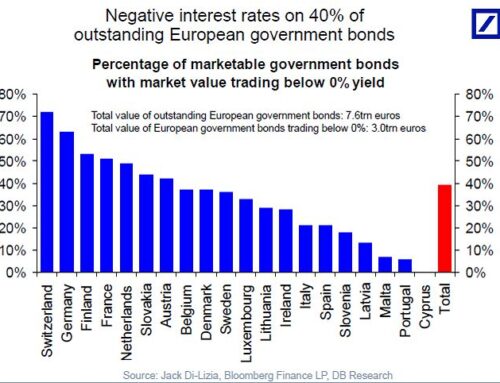How can you tell if the markets are in bubble territory? Watch out for these signs, says @theintuitinvest via @enterprising https://t.co/WTXYnQxt6J
— CFA Institute (@CFAinstitute) December 19, 2017
I want to start this with one paragraph from HERE.
In a recent conversation with Meb Faber, William Bernstein discussed how his criteria for seeing a bubble has more to do with sociological factors than econometric indicators. Here are his four signs of a financial market bubble:
-
Everyone around you is talking about stocks (or real estate or whatever the fad asset of the day is). And you should really start worrying when the people talking about getting rich in certain areas of the market don’t have a background in finance.
-
When people begin quitting their jobs to day trade or become a mortgage broker.
-
When someone exhibits skepticism about the prospects for stocks and people don’t just disagree with them, but they do so vehemently and tell them they’re an idiot for not understanding things.
-
When you start to see extreme predictions. The example Bernstein gives is how the best-selling investment book in 1999 was Dow 36,000.
But what is a bubble? Why do they occur? Cant, we grow without bubbles?
This picture is something that can explain the bubble.
An economic bubble or asset bubble (sometimes also referred to as a speculative bubble, a market bubble, a price bubble, a financial bubble, a speculative mania, or a balloon) is a trade-in of an asset at a price or price range that enormously exceeds the asset’s intrinsic value.
Come to the point.
The asset can be anything. Even tulip flowers can make a bubble.
While searching more about it, I found something.
- Most measures stretch valuations. They include the Shiller price-to-earnings ratio, which is only as high as it was during the dot-com bubble of 2000 and the 1929 market crash. However, it’s not a reliable indicator of market tops.
- Leverage is extended. Margin debt, or the dollar volume of stocks bought with borrowed money, surged to a record high just before the US election.
- Retail investors are suddenly rushing to buy. Following eight years of net outflows, they poured nearly $80 billion into mutual funds and exchange-traded funds in the post-election rally. However, this year, corporate insiders have been selling at the fastest pace in nearly 30-year
- technicals are showing vulnerability. ( Yes, Technical analysis is beneficial)
- Investors are complacent, and it seems like the calm before the storm.
- Interest rates in the financial system are increasing By Central banking or market-determined.
- Inflation is picking up.
I completely agree.
Before ending this post, I have something for you.
Some leaders achieved success due to their intrinsic value.
This great president.
Oh yeah. This incredible human being.
I don’t know others, but I respect them.
And then there is… well, you know.
Our President is literally too stupid to walk correctly. pic.twitter.com/TIRUDiAiR1
— Chris Jackson (@ChrisCJackson) July 13, 2018
Isn’t he a sign of a bubble? ( Something more than his intrinsic value )







